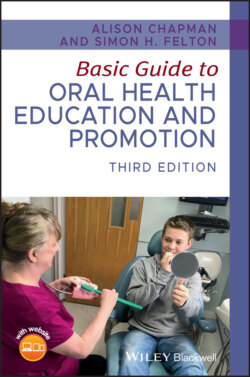Читать книгу Basic Guide to Oral Health Education and Promotion - Alison Chapman - Страница 19
Development of the palate and nasal cavities Week 5
ОглавлениеThe frontonasal and maxillary processes begin to form the nose and maxilla (upper jaw). However, if the nasal and maxillary processes fail to fuse, then a cleft will result. This is the most common craniofacial (skull and face) abnormality that babies are born with, and is thought to commonly result from a combination of genetic and environmental factors, or as part of a wider syndrome [4].
A baby can be born with a cleft lip, a cleft palate, or both. Cleft lip and/or palate occurs in 1–2 births out of every 1000 in developed countries [5]. Submucous cleft palate can also occur, which is a cleft in the soft palate and includes a split in the uvula. Surgery to close a gap is often undertaken when a baby is less than a year old.
A cleft lip can be anything from a small notch in the lip (incomplete cleft lip) to a wide gap that runs up to the nostril (complete cleft lip). It can also affect the gum, which, again, can be a small notch or complete separation of the gum.
A cleft lip can be either (Figure 1.6):
Unilateral – affects one side of the mouth (incomplete or complete).
Bilateral – affects both sides of the mouth (incomplete or complete).
A cleft palate is a gap in the roof of the mouth. A cleft can affect the soft palate (towards the throat) or the hard palate (towards the lips), or both. Like a cleft lip, a cleft palate can be unilateral or bilateral, and complete or incomplete (Figure 1.6)
